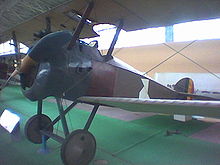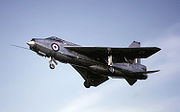- Clayton & Shuttleworth
-
Clayton & Shuttleworth was an engineering company located at Stamp End Works, Lincoln, Lincolnshire. The company was established in 1842 when Nathaniel Clayton (1811-1890) formed a partnership with his brother-in-law, Joseph Shuttleworth (1819-1883).
Contents
History
In 1845 they built their first portable steam engine, and in 1849 their first threshing machine. These products became the mainstay of the firm's business. Clayton & Shuttleworth became one of the leading manufacturers in the country at the time. They supplied steam engines and threshing machines to other manufacturers, as well as selling under their own name. In 1851 they sold more than 200 steam engines, boosted by the Great Exhibition. By 1857 they had produced a total of 2,400 steam engines, and by 1890 total output had reached 26,000 steam engines and 24,000 threshing machines.
In 1870 their workforce in Lincoln was 1,200. The export trade was important to the firm. A branch in Vienna (Austria) was established early on, and other branches followed at Pest (Hungary), Prague (now Czech republic), Cracow (Poland) and Lemburg (now Ukraine).
The firm became a limited company in 1901, and Alfred Shuttleworth (1843-1925), son of the founder, became chairman.
In the twentieth century Clayton & Shuttleworth for a short time manufactured tractors. In 1911 they built a 4-cylinder oil engine, with car-type radiator, sheet metal bonnet, and a cab roof. This was followed in 1916 by a 4-cylinder gas-kerosene engine crawler tractor ("Chain Rail"). This 40 horsepower (30 kW) machine lasted till 1929. They also built a 100 hp (75 kW) gun tractor similar to a Holt tractor. They were the first British firm to make a combine harvester.
They failed in the depression of the 1930s, and were taken over by Marshall, Sons & Co. of Gainsborough, for the combine harvester technology.
Aircraft manufacturer
 A Clayton & Shuttleworth built Sopwith Camel on display at the Musée Royal de l'Armée et de l'Histoire Militaire in Belgium
A Clayton & Shuttleworth built Sopwith Camel on display at the Musée Royal de l'Armée et de l'Histoire Militaire in Belgium
In 1916 the company made parts for the Submarine Scout airship for the Admiralty and during the First World War received a number of contracts to build aircraft for both the War Office and Admiralty.[1] The first contract was to build the Sopwith Triplane, although the War Office cancelled the contract, 49 were built for the Royal Naval Air Service with the first Clayton-built aircraft delivered on the 2 December 1916.[1][2] The company built the aircraft in the eastern end of the Titanic works from where they were pushed outside for engine runs, following ground tests the aircraft were dismantled and taken to Robey's Aerodrome at Bracebridge Heath for test flying and delivery.[3]
In March 1917 the company received a contract to build the Sopwith Camel which remained in production at Clayton's until 1919 when over 500 aircraft had been built.[4] In 1916 a new works was built to enable the company to build the large Handley Page O/400 bomber.[4] When completed the aircraft unlike the smaller Sopwith aircraft were flown out for testing and delivery from a field to the east of the works, the field became known as Handley Page Field.[4] After production of the O/400 a contract was placed to build the Vickers Vimy but only one was built before the Armistice and the contract was cancelled.[5]
Red Baron
One of the most notable aircraft built by Clayton & Shuttleworth was Sopwith Camel B7270 flown by Canadian pilot Roy Brown and officially credited with the downing of the Red Baron Manfred von Richthofen.[6] The company issued a souvenir leaflet after the war to celebrate the success.[6] Modern research indicates that Brown may not have fired the fatal shot.
Aircraft built
- Handley Page 0/400
- Sopwith Camel
- Sopwith Triplane
- Vickers Vimy
Steam engines
A variety of different sized machines were built.
Tractor models
- 1911 80-100 hp Oil Tractor - described as "The BEST Oil Tractor made"
See also
- Marshall, Sons & Co. of Gainsborough
Notes
References
- Walls, John (1977). Clayton & Shuttleworth and Marshall Aircraft Production. Lincoln: Control Column.
- MERL
- Classic Tractors of the World, Nick Baldwin
External links
Categories:- Tractors
- Defunct manufacturing companies of the United Kingdom
- Companies established in 1842
- Companies based in Lincolnshire
- Defunct aircraft manufacturers of the United Kingdom
- Steam road vehicle manufacturing companies
- Tractor manufacturers of the United Kingdom
- Lincoln, England
Wikimedia Foundation. 2010.

